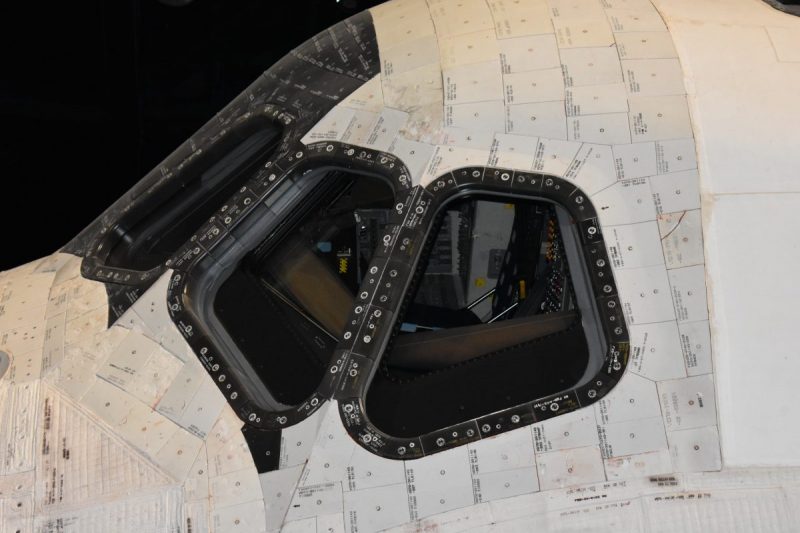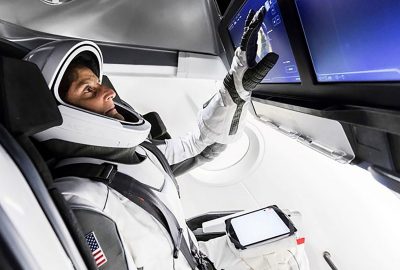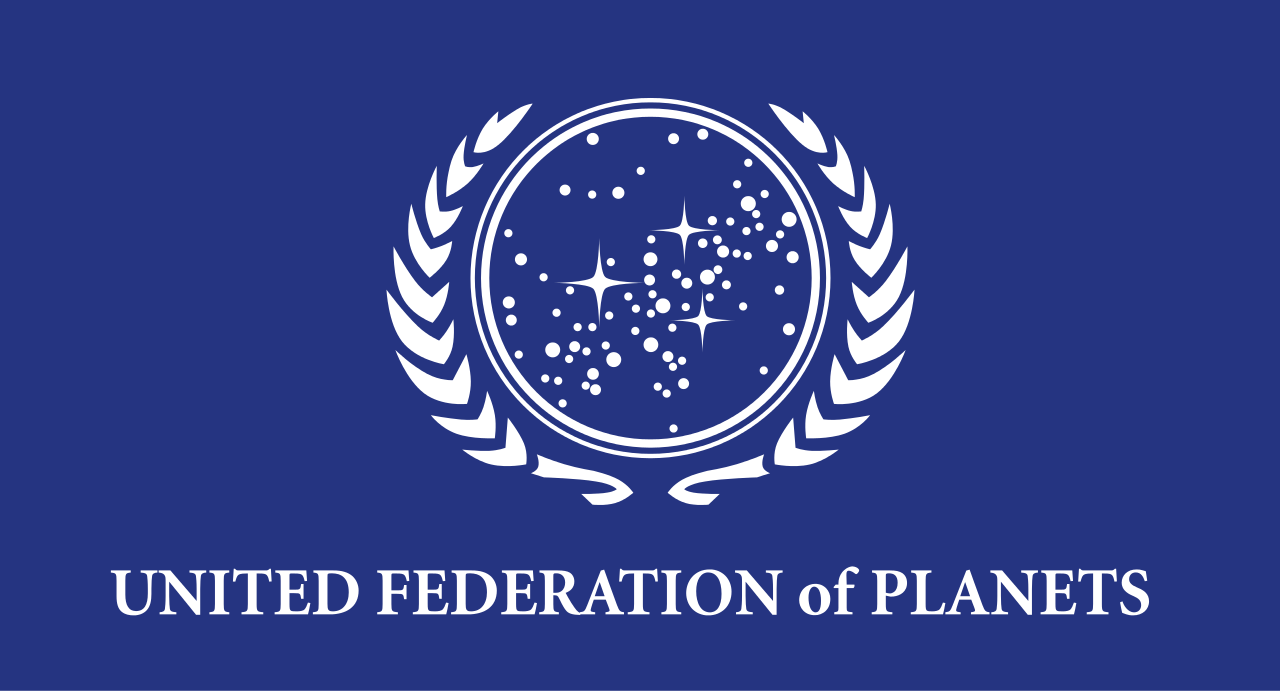This ‘Seamstress of the Stars’ Kept NASA’s Space Shuttle Safe and Stylish
April 11, 2018When I first would think of the Space Shuttle, I always thought of it as basically an airplane that went to outer space.
Of course this was when I was a child, but as I grew up, I still thought of the exterior of the shuttle as metallic and tough, especially since it had to withstand breaking through the atmosphere at high speed and temperature.
However, in February of 2016, I met Jean Wright at a NASA event at Kennedy Space Center and she began to change what I knew about the shuttle and its designs.
When she said she was a seamstress during the space shuttle program, I assumed she meant the suits. In fact, she actually meant the exterior!
The white exterior of the Space Shuttle is actually a thick, giant blanket. Jean Wright was a part of a group called the “Sew Sisters”, and they sewed the fabric layers onto the freaking Shuttle!
Star Letters just had to interview Jean and hear her story.
Can you briefly describe your role in the Space Shuttle Program?
My job title was “Aerospace Composite Tech (soft goods) meaning anything to do with fabrics/films on the space shuttle. primarily sewing (we call it building) parts for the shuttle. That would include thrusters, gap fillers, FIB blankets for the outside surface of the shuttle and thousands of Thermal Protection System (TCS) internal blankets.
Basically, a skilled seamstress!
In your own words, can you explain what it means to be a “Sew Sister”?
It was a very special group of ladies (18 of us) who were so fortunate to be able to work on such a technological wonder that the shuttle was! Not many people in the world had that fantastic opportunity!
What was the best part about having such a huge role in the Space Shuttle Program?
Well, the Thermal Protection System is the most important system on board the shuttle! It’s a unique job that’s for sure! The best part…I’d have to say, the astronauts would come to our building post mission and thank all of us for helping to bring them home safely! Can’t beat that! They were all so grateful and sweet to us!
Do you have one memory that sticks out in your mind during your time as a Sew Sister?
That would STS-117. We had a Class 11 blanket (about 2″ thick) peel back from the upper side of the left OMS Pod. NASA was concerned that the blanket would cause excessive heating to the area due to friction, or it would peel off leaving that area vulnerable to a “burn through!” Since we didn’t make very many of that class blanket on our Multi-Needle Sewing Machine, we had to “fire it up” to make a few test blankets.
You see, NASA wanted that whole section of the OMS replicated. That also included the tiles in that area too. We had to make 4 test panels so that the various NASA Centers could do wind tunnel and heat testing to see if it would be a problem upon re-entry. It was determined it would be ok, but eventually, an astronaut just “tucked” it back in with his fingers after trying to stitch it back into place. I was in charge of making sure those blankets were made quickly, as we only had a couple of days to get the panels done!
Did you face any obstacles from people by being a female in the Space Program?
Obstacles…
Well let’s just say, since being a seamstress is traditionally a female profession, there was some “lack of respect”. That it was an “easy” job, though we had to know certain mathematical calculations to fill our parts with batting. Not to mention our stitch lines were pretty exact! Engineers would actually ask us to “hem their pants” or to “sew buttons on them!” Occasionally, we would get asked why the Ladies Room were in such obscure locations in the older buildings. Sometimes, an older staff member would say,”That’s because you weren’t supposed to be here!” Meaning women!
Do you have anyone in your life that you looked up to or inspired you to go into the field of science?
I would have to say the Wright Brothers and the ladies that sewed on the Apollo moon spacesuits. The brothers machined and hand sewed their Flyer plane, and the ladies who sewed the Apollo suits sewed with extreme accuracy. In essence, they sewed mini spaceships! I had the honor last August to meet Ruthie Ratledge, the only lady seamstress still living that sewed on those special suits! She works part-time for ILC-Dover!
How do you think we can inspire young children to take an interest in space and science?
In the case of we seamstresses, letting then know that not everyone has to be an Engineer or a Scientist. That if they have artistic or creative skills, there are plenty of “non-traditional” skills that most people would not associate with jobs that NASA needs! Be the best at what they love to do!
What advice do you have for young girls who want to pursue science and space?
Be true to themselves! Don’t be ashamed or embarrassed to be a intelligent person! Be proud of what skills they have. Be it traditional or something that involves a unique/different skill! Most importantly, just love themselves for who they are!
In your opinion, what is the most important thing for the future of the space industry?
The ability to “think outside the box.” To work hard, knowing that knowing developing new spaceships or payloads, will require working long hours, but that’s rewarding work!
What do you currently do at Kennedy Space Center Visitor’s Complex? What are some of the most frequent questions you get asked there?
I’m currently a Docent at the Atlantis Exhibit. Docent is Latin for “teacher”. Everyday I hope to educate people about not only the shuttle program. But all the wondrous telescopes, satellites and other scientific “Spin-Offs” that NASA creates to benefit everyone! As for the most frequently asked questions: Well, # 1 is,Is this a real shuttle? Why is Canada on the arm?
And of course, how do the astronauts go to the bathroom in space? 🙂
What kind of food items do you have on display? What are you wanting to show with them?
We have over 20 food items on display. This includes candy, cookies and dried fruit These items are bought “over the counter” and re-packaged. It’s cheaper for NASA to do the snacks that way. We also show our guests how the food is reconstituted by adding hot or cold water by using a small needle to inject it in. “Cooking” most of the items takes about 15 mins and they’re fastened to the ISS gallery wall for that! The astronauts will Velcro the food item to a Velcro tray. It’s eaten just like you’d eat food here on Earth! Of course, they have meat, vegetables, pasta and desserts to eat too! The food is dehydrated, thermostabilized or freeze-dried. This display is our most popular one!
I am so grateful for Jean taking the time to talk with us about what it was like to have such a huge part in the shuttle program! Her story is absolutely amazing, and every time we talk to her we learn so much.
 Cassie Thonen is a Space Reporter and Photojournalist for Star Letters. She studied Studio Art and Design at Northern Illinois University, with a degree emphasis in Photography. When she is not chasing rockets or staring at the stars, Cassie can be found perfecting her photography or with her dogs, Frankie and Chewie. You can find her on Twitter and Instagram.
Cassie Thonen is a Space Reporter and Photojournalist for Star Letters. She studied Studio Art and Design at Northern Illinois University, with a degree emphasis in Photography. When she is not chasing rockets or staring at the stars, Cassie can be found perfecting her photography or with her dogs, Frankie and Chewie. You can find her on Twitter and Instagram.









